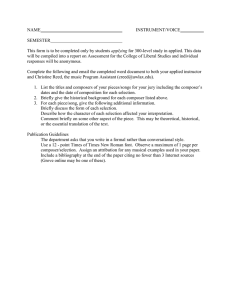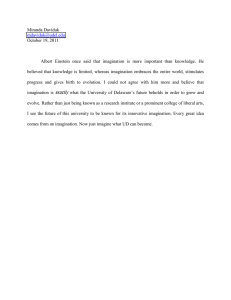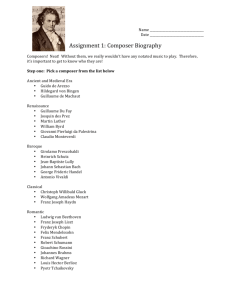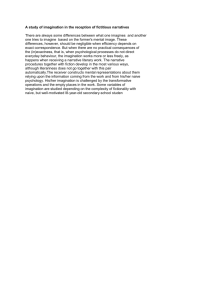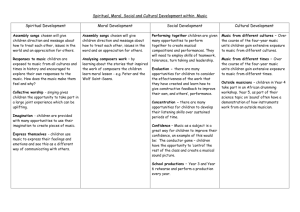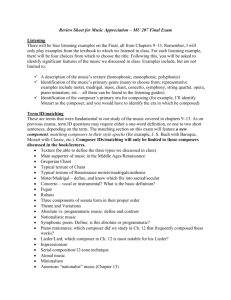Semester Theme: Engaging the Imagination
advertisement
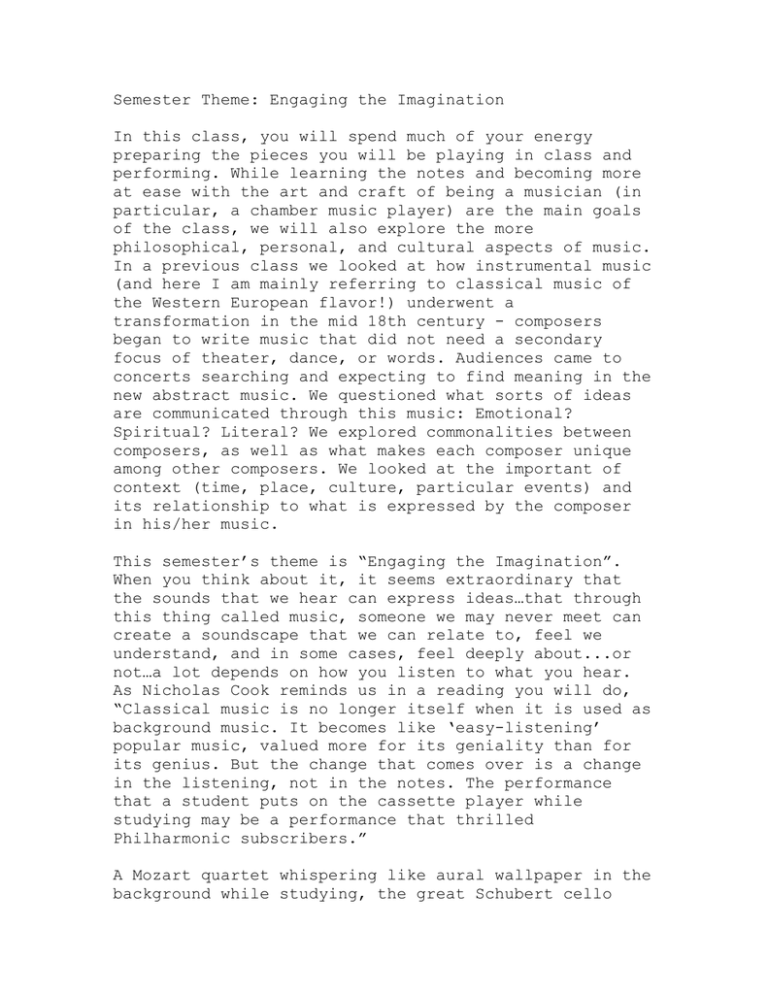
Semester Theme: Engaging the Imagination In this class, you will spend much of your energy preparing the pieces you will be playing in class and performing. While learning the notes and becoming more at ease with the art and craft of being a musician (in particular, a chamber music player) are the main goals of the class, we will also explore the more philosophical, personal, and cultural aspects of music. In a previous class we looked at how instrumental music (and here I am mainly referring to classical music of the Western European flavor!) underwent a transformation in the mid 18th century - composers began to write music that did not need a secondary focus of theater, dance, or words. Audiences came to concerts searching and expecting to find meaning in the new abstract music. We questioned what sorts of ideas are communicated through this music: Emotional? Spiritual? Literal? We explored commonalities between composers, as well as what makes each composer unique among other composers. We looked at the important of context (time, place, culture, particular events) and its relationship to what is expressed by the composer in his/her music. This semester’s theme is “Engaging the Imagination”. When you think about it, it seems extraordinary that the sounds that we hear can express ideas…that through this thing called music, someone we may never meet can create a soundscape that we can relate to, feel we understand, and in some cases, feel deeply about...or not…a lot depends on how you listen to what you hear. As Nicholas Cook reminds us in a reading you will do, “Classical music is no longer itself when it is used as background music. It becomes like ‘easy-listening’ popular music, valued more for its geniality than for its genius. But the change that comes over is a change in the listening, not in the notes. The performance that a student puts on the cassette player while studying may be a performance that thrilled Philharmonic subscribers.” A Mozart quartet whispering like aural wallpaper in the background while studying, the great Schubert cello quintet shadowing the animated conversation in a fine restaurant, a Chopin sonata echoing in the mall…it is not that these are blasphemous offenses, it is that they are such lost opportunities! So our third goal this semester (along with learning the notes and playing together) is to become more engaged with the music we are hearing and playing, and to successfully engage our audiences as well. To do this, we will try to understand the music itself - as a collection of ideas that someone expresses through sound. Our tools for understanding are our ability to analyze what we are actively listening to, and our imagination, which translates what we hear into ideas and meaning we can relate to. As we engage, we do a little reconstructing, creating, and re-creating of the music. Ultimately, our decisions of how to highlight, shape, and translate these ideas become the art and responsibility of being a performing musician. The decisions we make in our performance affect the audience’s relationship to the piece. How do we get them to listen to the sounds they hear, how do we get them to engage, to use their imaginations so that they begin to construct some internal meaning and go into that very personal and temporal world that music offers? The music we will be looking at and playing is ‘idea’ music; each piece has ideas in it that we will uncover and explore. In my own chamber music work I have found that while I might be drawn to particular aspects of the music (architecture, the ebb and flow of dissonance, the use of motives), the other musicians working on the piece with me are drawn to different aspects (melody, rhythmic flow, harmonic articulations). We can use each other’s strengths and interests to get more fully 'inside the piece' as we uncover the mechanics that add up to ideas. The wonder of music lies in the way these can, through our imagination, inspire emotional and spiritual resonance. Hopefully, we will get closer to the composer’s ideas and to each piece as a unique work of art with its own internal drama, and by doing that, discover our intersections as human beings in relationship to each other.
